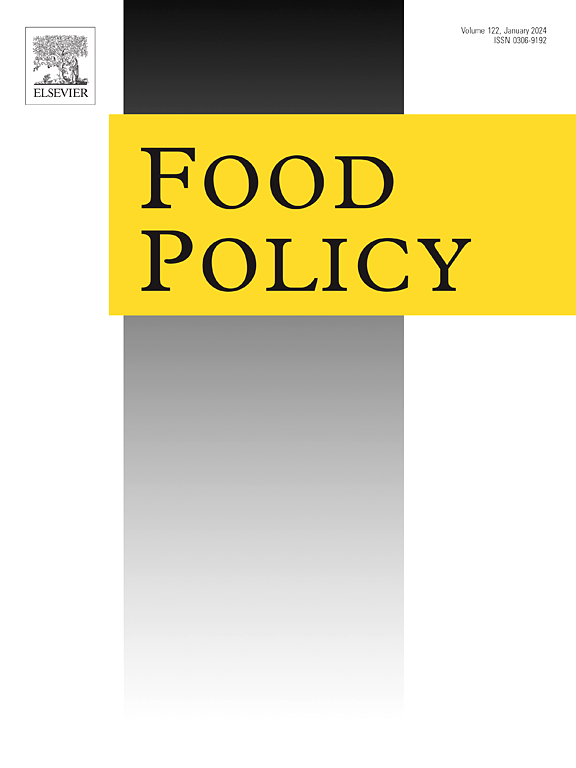饮食与疾病:研究塞内加尔儿童健康的季节性决定因素
IF 6.8
1区 经济学
Q1 AGRICULTURAL ECONOMICS & POLICY
引用次数: 0
摘要
食物供应和疾病发生率的季节性变化给撒哈拉以南非洲地区的儿童健康带来了压力。利用塞内加尔的全年调查数据,我们研究了主要健康投入(饮食多样性、腹泻和发烧)的季节性如何帮助预测儿童健康的季节性(体重身高 Z 值)。我们首先使用二阶三角多项式对健康和健康投入的季节性变化进行参数化,然后将儿童健康的季节性曲线分解为由各健康投入的季节性所解释的组成部分。我们发现,疾病发病率的滞后季节性可以预测儿童健康的季节性,而饮食多样性的季节性却不能预测儿童健康的季节性--这可能是因为塞内加尔即使在一年中食物最丰富的时期,饮食也很贫乏。我们还观察到,在不同的财富水平和地区,这些健康投入对儿童健康的预测方式存在明显的异质性。本文章由计算机程序翻译,如有差异,请以英文原文为准。
Diet and disease: Examining the seasonal determinants of children’s health in Senegal
Seasonal changes in food availability and disease incidence put pressure on children’s health in Sub-Sahara Africa. Using year-round survey data from Senegal, we examine how seasonality in key health inputs (dietary diversity, diarrhea, and fever) helps predict seasonality in children’s health (weight-for-height z-score). We first parameterize seasonal variation in health and health inputs using second-order trigonometric polynomials, then decompose the seasonal curve of children’s health into component parts explained by seasonality in each health input. We find that lagged seasonality in disease incidence predicts seasonality in child health, while seasonality in dietary diversity does not — likely because diets are poor in Senegal even during the most food-plentiful part of the year. We also observe noticeable heterogeneity in the way these health inputs predict children’s health across different wealth levels and regions.
求助全文
通过发布文献求助,成功后即可免费获取论文全文。
去求助
来源期刊

Food Policy
管理科学-农业经济与政策
CiteScore
11.40
自引率
4.60%
发文量
128
审稿时长
62 days
期刊介绍:
Food Policy is a multidisciplinary journal publishing original research and novel evidence on issues in the formulation, implementation, and evaluation of policies for the food sector in developing, transition, and advanced economies.
Our main focus is on the economic and social aspect of food policy, and we prioritize empirical studies informing international food policy debates. Provided that articles make a clear and explicit contribution to food policy debates of international interest, we consider papers from any of the social sciences. Papers from other disciplines (e.g., law) will be considered only if they provide a key policy contribution, and are written in a style which is accessible to a social science readership.
 求助内容:
求助内容: 应助结果提醒方式:
应助结果提醒方式:


